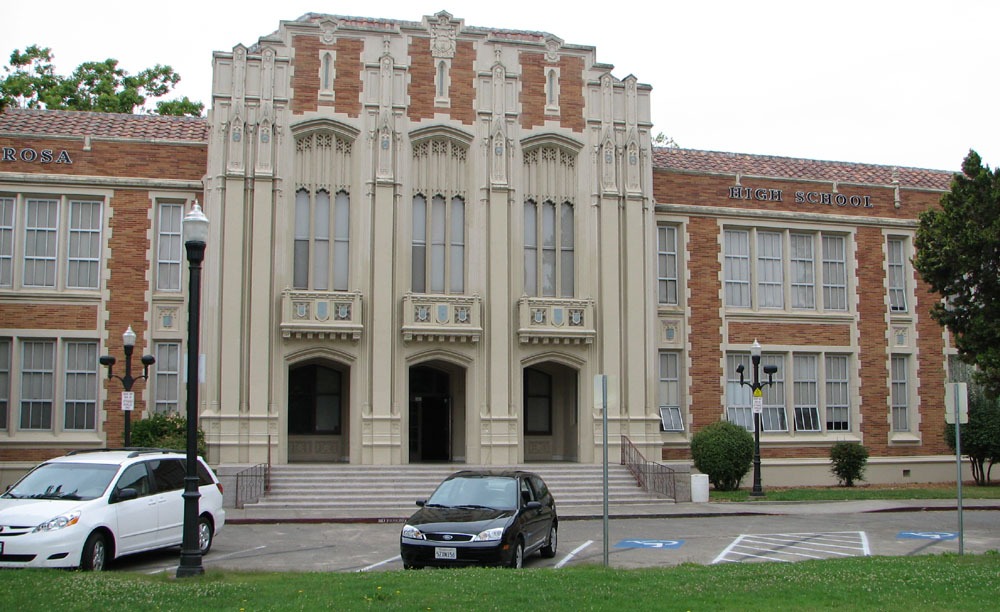Short introduction to Santa Rosa, California
Santa Rosa is a city in San Francisco’s Bay Area. It lies on the Santa Rosa Plain, surrounded by the Valley of the Moon, Sonoma Valley and Laguna de Santa Rosa. It is the county seat of Sonoma County, and one of the largest cities in California’s North Coast, Wine Country and the North Bay in terms of population.
The history of Santa Rosa, California: pre-Spanish and Spanish period
Santa Rosa was once home to the vast population of the Native American tribes (Pomo) who inhabited in the valleys. The tribes controlled the valleys tightly, and would not allow the entrance of other people unless authorized permission was obtained. Those who entered the Pomo’s territories without permission would subject themselves to harsh penalties.
The Europeans arrived in later decades, and since the landing of the white man the Indians began to suffer a disease that was “new to them,” bringing high mortality rates to their population. It turns out that the Caucasians were the ones who unintentionally brought the smallpox from Europe. Aside from the illness, colonization efforts were also pointed as great factors in wiping out the Indian population. By the 1900s the Pomos’ population had been dwindled to 95%.
Post-Spanish period in the 18th century
The Carrillo family (in-laws of Californio rancher, politician and military commander Mariano Guadalupe Vallejo) were the very first settlers in the area. The Carrillos settled in the Sonoma pueblo and Petaluma area, building their own homestead there. When Mexico became independent from Spain in the early 19th century, land grants were conferred to private individuals. One of those was the family of Maria Ygnacia Lopez de Carrillo, one of the original recipients of Rancho Cabeza de Santa Rosa, whose land grant was later honored to that very family. The Rancho is located just east of what is now known as downtown Santa Rosa.
However, before the Carrillos built their own adobe residence there, Spanish and Mexican settlers from nearby areas had already been making a living by raising livestock and slaughtered animals at the fork of the Santa Rosa Creek and Mantazas Creek. The name “Mantazas Creek” was probably associated with the slaughtering, so it was later known as La Matanza (matanza means “slaughtering” or “butchering” in Spanish).
Santa Rosa was slowly building itself into a town with more amenities and infastructure to be built. By the mid-19th century, a Wells Fargo post and general post were established, and plans to include paved streets with a public square in the heart of the city were underway. The public square, now called Old Courthouse Square, and the Wells Fargo establishment were built in what now became downtown Santa Rosa.
Santa Rosa was incorporated on March 26, 1868. The city’s progress, despite relatively slow compared to Petaluma’s, grew steadily early on nonetheless. As a result, Santa Rosa’s population grew where population in the surrounding areas declined or stagnated. However, many other populations in the San Francisco Bay Area and Southern California led the decline of Santa Rosa’s own population.
Santa Rosa in the 20th century and beyond
Santa Rosa’s downtown suffered the most damages brought by the 1906 San Francisco earthquake. Apart from that, the city didn’t experience much devastation.
After end of the Second World War, Santa Rosa revived its growth, and this time it became more relatively rapid than in the previous years. Between the years 1950 and 1970, the city received an average of about 1,000 a year. Since 1971 Santa Rosa had grown by about 3,000 residents annually, which indeed tripled the average growth it had during the previous 20 years. For 69 years until 1972 Santa Rosa continued as a major hub for civil defense activity.
In 1991 the city council ratified its first modern “General Plan”, which necessitated expansion of its urban boundary including all the land that was then planned for the city’s takeover. Around the time of the start of the planning, the population stood at approximately 113,000. In 1996 Santa Rosa extended its planning period by a decade as well as increased its land size and population. The city council renamed the project as Vision 2020. The city is expected to estimate its population of 195,000 in 2020.
From its slow growth in the previous decades, Santa Rosa is set to become one of the biggest cities in the Bay Area a few years from now. Despite its urban growth, its has preserved its wildlife well on the city borders as well as the heart of the city, where a variety of fauna and flora can be seen and appreciated. As a result, Santa Rosa has acquired a reputation as a “nature city.” In 2007 the city paraded a new slogan as “California’s Cornucopia”.

